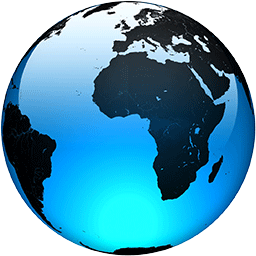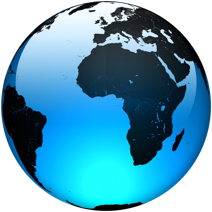
Global Packaging Market - Growth, Trends, COVID-19 Impact, and Forecasts (2022 - 2027)

The Global Packaging Market is expected to register a CAGR of 3. 94% during the forecast period of 2022-2027. The global packaging business has experienced consistent growth over the last decade due to substrate choice changes, expansion of new markets, and changing ownership dynamics.
New York, Sept. 05, 2022 (GLOBE NEWSWIRE) -- Reportlinker.com announces the release of the report "Global Packaging Market - Growth, Trends, COVID-19 Impact, and Forecasts (2022 - 2027)" - https://www.reportlinker.com/p06246257/?utm_source=GNW
Traditional packaging may continue to be replaced by flexible packaging, high-barrier films, and stand-up retort pouches may challenge rigid pack formats like metal tins and glass jars for a wide range of food products.
*Key Highlights*
With the rising consumption of sweets and confectionery, several flexible plastic packaging providers are offering packaging solutions, specifically catering to this demand, and are further driving their sales and revenues. For instance, according to the US Census Bureau, confectionery manufacturing industry revenue in the United States is expected to reach USD 10.89 billion by FY 2023?.
According to the Flexible Packaging Association, flexible packaging is mainly used for food, which accounts for more than 60% of the total market. Since it could incorporate new solutions for the various packaging issues it faces, the flexible packaging industry is experiencing robust growth. In addition, the Indian food and grocery market is the world’s sixth-largest, according to IBEF, with retail accounting for 70% of sales. The Indian food processing industry, which contributes to 32% of the country’s overall food market, ranks fifth in production, consumption, and export and is one of the country’s most important industries. ?
The sustainability trends, including recycling and the usage of bio-degradable forms of PET, are expected to rise over the forecast period. In some regards, it will always face sustainability issues due to the nature of its production. However, the recycling streams and development will help neutralize such sustainability issues. For instance, the Coca-Cola European partners pledged to collect 100% of the packaging and use 50% recycled plastic in plastic PET bottles in Western Europe by 2025. PepsiCo aims to use 50% of recycled plastic in its bottles across the European region by 2030, with an interim target of around 45% by 2025. Also, various large food manufacturers are under pressure from campaigners and consumers and are currently on a mission to rethink their plastic packaging and move towards a circular economy. For instance, Nestle and Mondelez recently signed the European Plastics Pact. This initiative is committed to making 100% of packaging recyclable or reusable and reducing virgin plastic usage by 2025.
Various significant companies focus on product innovations to hold a significant position in the studied market. For instance, in February 2021, Constantia Flexibles announced its new product, Perpetua, a recyclable, high-barrier, polymeric mono-material packaging solution for pharmaceutical products. According to the company, the solution has a wide range of pharmaceutical packaging applications and is now available worldwide.
Various vendors have been focusing on expanding their market presence by constructing new production facilities for paper packaging. For instance, in December 2021, Promateris, a Romanian industrial packaging company, announced entering the paper packaging area in 2022 by building a production facility in the country, a project that will be completed in 2023. Furthermore, in 2022, the firm expects to begin producing biodegradable and compostable raw materials based on corn starch, making it the first company to do so in Eastern Europe.
However, on the other hand, the overall usage of non-recyclable, non-biodegradable plastic packaging solutions is expanding, resulting in increased carbon emissions in the environment. This might be a factor that could restrain the market growth. As a result, numerous large firms such as Amazon, Google, and Tetrapak, among others, are aiming toward net-zero carbon emissions, which is predicted to be their capital expenditure.
During COVID-19, contactless delivery has also emerged as a new trend. Pioneers in sustainable packaging were able to adjust to these new standards, such as Garçon Wines, whose frictionless supply of letterbox- and climate-friendly flat wine bottles has witnessed a great demand. In addition, the rapid production of COVID-19 vaccines has also increased the need for glass containers or vials for storage purposes. By March 2021, Schott AG, a prominent German glass company, had produced enough vials for one billion COVID-19 vaccine doses, and it is on schedule to produce over two billion doses. According to the company, their borosilicate glass vials are used in roughly 90% of the licensed vaccinations because they are resistant to shocks and temperature extremes.
*Key Market Trends*
Paper and Paperboard Packaging Products to Witness the Highest Growth
The market is driven by the increased usage of environmentally friendly materials in packaging. Eco-friendly packaging is recyclable, biodegradable, reused, and non-toxic with a low environmental impact. Paper packaging products, such as paper bags, pouches, and cartons, are the fastest-growing sustainable packaging materials.? The increasing trend of online retail and environmental regulations on non-biodegradable and non-recyclable packaging solutions is progressively creating a massive demand for eco-friendly paper packaging solutions.?
In February 2021, Coca-Cola tested its first test run on paper bottles from an extra-strong paper shell containing a thin plastic liner. It ran its first test with 2,000 bottles to see how it held up. The company’s goal is to create a 100% recyclable, plastic-free bottle capable of preventing gas from escaping from carbonated drinks.
Moreover, companies such as Smarties have rolled out recyclable paper packaging for confectionery products worldwide in the confectionaries category. This would represent a transition of 90% of the Smarties range, as 10% was previously already packed in recyclable paper packaging. Further, Nestlé’s major step toward its ambition is to make all of its packaging paper-based and recyclable or reusable by 2025 and reduce the usage of virgin plastics by one-third in the same period.
Companies in the paper packaging market are increasing their focus on sustainable packaging solutions that meet consumer demands. For instance, Huhtamäki Oyj, a Finland-based food packaging specialist, developed the Huhtamäki blue loop, a novel platform where partners can collaborate to brainstorm sustainable paper packaging. The introduction of such innovative platforms is leading to market expansion.
Moreover, various vendors are adapting and innovating new packaging with paper packaging material to reduce the environmental impact of packaging and launch various recycling initiatives. For instance, in February 2021, TetraPak announced a new initiative in Jeddah in partnership with the District Model Center of Muhammadiyah in Jeddah. It will collect used carton packages and recycles them to support sustainable consumption practices.
Asia Pacific to Remain the Biggest Market
Plastic packaging has observed a wide-scale utilization in the Asia Pacific region, with countries like India and China contributing significantly through their food and beverages market. The Chinese packaging sector is heavily influenced by variables such as rising per capita income, changing social atmosphere, and demographics, including ban enforcement on plastics to minimize its plastic footprint. This results in significantly impacting the packaging business.
In a 2021-2025 "five-year plan,"China announced it would improve its plastic recycling and incineration capacities, promote "green"plastic products, and combat the misuse of plastic in packaging and agriculture. The new five-year plan would push merchants and delivery companies to reduce "unreasonable"plastic wrapping and increase garbage incineration rates in cities to about 800,000 tons per day by 2025, up from 580,000 tons last year. Such developments are expected to increase the country’s demand for recyclable flexible plastic packaging. Over the projection period, the rise of e-commerce giants like Alibaba is expected to fuel the packaging market. For example, Chinese shoppers received approximately 1.9 billion shipments during Alibaba’s Double 11 shopping event, which lasted 10 days.
Packaging is India’s fifth-largest industry and one of the country’s fastest-growing sectors. Over the last few years, the packaging industry has been a key driver of technology and innovation in the country, contributing value to various manufacturing sectors, including agriculture and the fast-moving consumer goods (FMCG) segments.
According to the Indian Institute of Packaging (IIP), packaging consumption in India has surged by 200% over the last decade, from 4.3 kilograms per person per annum (pppa) in FY10 to 8.6 kg pppa in FY20. Despite the sharp increase over the last decade, there remains tremendous space for growth in this industry compared to other developed regions throughout the world.
Japan is a major user of paper-based products in various industries, including newspaper, packaging, printing and communication, sanitary products, and other miscellaneous uses. Moreover, due to consumer awareness about sustainable packaging, worries about deforestation, and raw material availability, there has been a recent movement in the packaging sector to utilize paper.
*Competitive Landscape*
The significant factors governing the Global Packaging Market are sustainable competitive advantages through innovation, levels of market penetration, barriers to exit, advertising expense power of competitive strategy, and firm concentration ratio. The players in this market possess a competitive advantage through innovation. The specification of the packaging material is different, mostly in plastic packaging, leaving a high possibility of product differentiation.
July 2022 - Mondi and Fiorini International teamed up to create a new paper packaging solution for Italian premium pasta product manufacturer Antico Pastificio Umbro. The new packaging is fully recyclable and, when rolled out across all pasta products, it could save up to 20 tons of plastic each year.
June 2022 - Coveris expanded capacity at its Kufstein site. The new extrusion facility, which was recently put into full operation, continues the modernization efforts at the plant and significantly increases the production speed of stretch film for silage bales.
June 2022- Ardagh Metal Packaging announced plans to expand its production capacity through a new facility at La Ciotat, France. The expenditure will be supported by Sud Attractivité and Bpifrance, catering to the increasing demands from existing and new customers for long-term partnerships in Middle East Africa (MEA) and Southwestern Europe.
April 2022 - Sealed Air introduced PRISTIQ, a digital packaging brand with a portfolio of solutions for design services, digital printing, and smart packaging, eliminating waste and excess packaging while enhancing products and customer engagement.
*Additional Benefits:*
The market estimate (ME) sheet in Excel format
3 months of analyst support
Read the full report: https://www.reportlinker.com/p06246257/?utm_source=GNW
About Reportlinker
ReportLinker is an award-winning market research solution. Reportlinker finds and organizes the latest industry data so you get all the market research you need - instantly, in one place.
__________________________
CONTACT: Clare: clare@reportlinker.com
US: (339)-368-6001
Intl: +1 339-368-6001
